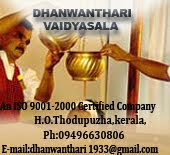MUSIC OF INDIA
The music of India includes multiple varieties of folk, popular, pop, classical music and R&B. India's classical music tradition, including Carnatic and Hindustani music, has a history spanning millennia and, developed over several eras, it remains fundamental to the lives of Indians today as sources of religious inspiration, cultural expression and pure entertainment. India is made up of several dozen ethnic groups, speaking their own languages and dialects, having very distinct cultural traditions.
Indian classical music
The origins of Indian classical music can be found from the oldest of scriptures, part of the Hindu tradition, the Vedas. It is also significantly influenced by Persian music.The Samaveda, one of the four Vedas, describes music at length. The Samaveda was created out of Rigveda so that its hymns could be sung as Samagana; this style evolved into jatis and eventually into ragas. Indian classical music has its origins as a meditation tool for attaining self realization. All different forms of these melodies (ragas) are believed to affect various "chakras" (energy centers, or "moods") in the path of the Kundalini[citation needed]. However, there is little mention of these esoteric beliefs in Bharat's Natyashastra, the first treatise laying down the fundamental principles of drama, dance and music.
Indian classical music has one of the most complex and complete musical systems ever developed. Like Western classical music, it divides the octave into 12 semitones of which the 7 basic notes are Sa Re Ga Ma Pa Dha Ni Sa, in order, replacing Do Re Mi Fa Sol La Si Do. However, it uses the just intonation tuning (unlike most modern Western classical music, which uses the equal-temperament tuning system).
Indian classical music is monophonic in nature and based around a single melody line, which is played over a fixed drone. The performance is based melodically on particular ragas and rhythmically on talas.
Hindustani music
Khyal and dhrupad are the two main forms of Hindustani music, but there are several other classical and semi-classical forms. Players of the tabla, a type of drum, usually keep the rhythm, an indicator of time in Hindustani music. Another common instrument is the stringed tanpura, which is played at a steady tone (a drone) throughout the performance of the raga. This task traditionally falls to a student of the soloist, a task which might seem monotonous but is, in fact, an honour and a rare opportunity for the student who gets it. Other instruments for accompaniment include the sarangi and the harmonium. The prime themes of Hindustani music are romantic love, nature, and devotionals. Yet, Indian classical music is independent of such themes. To sing a raga any poetic phrase appropriate for the raga may be chosen and the raga would not suffer.
The performance usually begins with a slow elaboration of the raga, known as badhat. This can range from long (30–40 minutes) to very short (2–3 minutes) depending on the style and preference of the musician. Once the raga is established, the ornamentation around the mode begins to become rhythmical, gradually speeding up. This section is called the drut or jor. Finally, the percussionist joins in and the tala is introduced. There is a significant amount of Persian influence in Hindustani music, in terms of both the instruments and the style of presentation.
Carnatic music
Carnatic music is similar to Hindustani music in that it is improvised (see musical improvisation). Primary themes include worship, descriptions of temples, philosophy, nayaka-nayaki themes and patriotic songs. Tyagaraja (1759-1847), Muthuswami Dikshitar (1776-1827) and Syama Sastri (1762-1827) are known as the Trinity of Carnatic music, while Purandara Dasa (1480-1564) is often called the father of Carnatic music.
Instruments
Instruments typically used in Hindustani music include the sitar, sarod, tanpura, bansuri, shehnai, sarangi, santoor, and tabla. Instruments typically used in Carnatic music include venu, gottuvadyam, harmonium, veena, mridangam, kanjira, ghatam and violin.
Musicians - Vocalists
There have been many notable vocalists from Indian classical music, these include Kesarbai Kerkar, Roshan Ara Begum, Subbulakshmi, G. N. Balasubramaniam, Balamuralikrishna, Jon B. Higgins, Ariyakudi Ramanuja Iyengar, Vishnu Digambar Paluskar, D. V. Paluskar, Abdul Karim Khan, Abdul Waheed Khan, Faiyaz Khan, Amir Khan, Bade Ghulam Ali Khan, Kumar Gandharva, Omkarnath Thakur, S.N.Ratanjankar,Gajananbua Joshi, Narayanrao Vyas, Mallikarjun Mansur, the senior and junior Dagar Brothers, the Gundecha Brothers, Nazakat and Salamat Ali Khan, Bhimsen Joshi, Mogubai Kurdikar, Kishori Amonkar, Pt. Jasraj, Ulhas Kashalkar, Satyasheel Deshpande and Rashid Khan.Musicians - Instrumentalists
Allauddin Khan was a versatile instrumentalist. He trained his son Ali Akbar Khan and his daughter Annapurna Devi, Nikhil Banerjee, Ravi Shankar, and the flautist Pannalal Ghosh, Ustad Azizul Islam from Bangladesh. Younger-generation sitar players include Chandrakant Sardeshmukh, Budhaditya Mukherjee and Shahid Parvez. Among the list of younger-generation flautists are eminent names such as Shri Dinkarrao Amembal, Devendra Murdeshwar, Vijay Raghav Rao, Hariprasad Chaurasia, Raghunath Seth and Nityanand Haldipur.
The name of Bismillah Khan is synonymous with that of the shehnai. Zia Mohiuddin Dagar was known for his proficiency with the veena.
Ustad Alla Rakha made the tabla popular in the West with Ravi Shankar. His son Zakir Hussain is also a well-known tabla player.
The name of Bismillah Khan is synonymous with that of the shehnai. Zia Mohiuddin Dagar was known for his proficiency with the veena.
Ustad Alla Rakha made the tabla popular in the West with Ravi Shankar. His son Zakir Hussain is also a well-known tabla player.
This entry was posted
at 7:03 AM
and is filed under
MUSIC OF INDIA
. You can follow any responses to this entry through the
.







